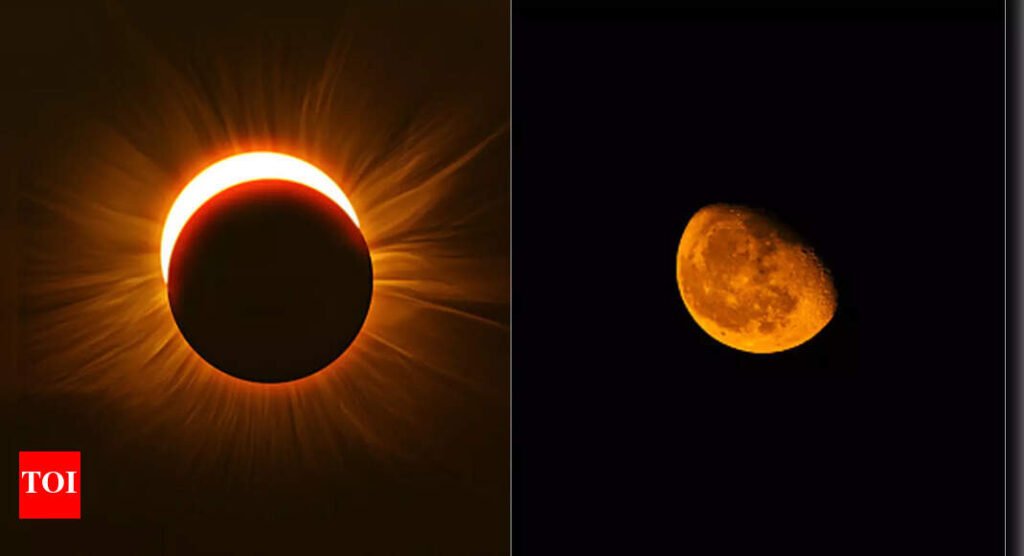Lunar and solar eclipses are spectacular astronomical events that capture the attention of people worldwide. Both occur when the Earth, Moon, and Sun align in a particular way, but the mechanisms and effects of these eclipses are quite different. Understanding the science behind these phenomena helps explain why they occur and what distinguishes one from the other.Eclipses have been studied for centuries and remain significant in modern astronomy. While both types involve shadows and alignment, the differences in their formation depend on the relative positions of the Earth, Moon, and Sun. This article outlines the scientific principles behind lunar and solar eclipses and highlights their distinct characteristics.The formation of lunar eclipsesA lunar eclipse happens when the Earth moves directly between the Sun and the Moon. In this alignment, the Earth’s shadow falls onto the Moon’s surface. Because the Earth is larger than the Moon, its shadow is much bigger, allowing for different types of lunar eclipses: total, partial, or penumbral.During a total lunar eclipse, the Moon passes completely into the Earth’s umbra, the darkest part of the shadow. This causes the Moon to take on a reddish hue, often called a “blood moon,” due to sunlight being filtered and refracted through the Earth’s atmosphere. Partial lunar eclipses occur when only part of the Moon enters the umbra, while penumbral eclipses happen when the Moon passes through the Earth’s lighter penumbral shadow, resulting in a subtle darkening.
Lunar eclipses can only occur during a full Moon, when the Moon is opposite the Sun in the sky. Because the Earth’s orbit and the Moon’s orbit are slightly tilted relative to each other, eclipses do not happen every month but only during specific alignments.The formation of solar eclipsesIn contrast, a solar eclipse takes place when the Moon moves between the Sun and the Earth. This causes the Moon’s shadow to fall on the Earth’s surface, blocking the Sun’s light partially or completely. Solar eclipses can be classified as total, partial, or annular.A total solar eclipse occurs when the Moon completely covers the Sun, as viewed from a specific location on Earth. During this event, day briefly turns to night, and the Sun’s corona, its outer atmosphere, becomes visible. Partial solar eclipses happen when only a part of the Sun is obscured by the Moon. An annular solar eclipse occurs when the Moon is farther from Earth in its elliptical orbit, making it appear smaller than the Sun. This results in a visible “ring of fire” around the dark silhouette of the Moon.
Solar eclipses happen only during a new Moon, when the Moon is between the Earth and the Sun. Like lunar eclipses, solar eclipses occur only when the orbits align precisely, which is why they are less frequent and visible from a much narrower path on Earth.Key differences in observation and safetyOne important difference between lunar and solar eclipses is how they can be observed. Lunar eclipses are safe to watch with the naked eye because the Moon is simply darkened by the Earth’s shadow. They are visible from anywhere on Earth where the Moon is above the horizon during the event.Solar eclipses, however, require special safety precautions. Viewing a solar eclipse directly without proper eye protection can cause serious and permanent eye damage. Observers use eclipse glasses or indirect viewing methods to safely watch the Moon pass in front of the Sun.
| Aspect |
Lunar eclipse |
Solar eclipse |
| Occurrence | When Earth is between the Sun and the Moon | When Moon is between the Sun and the Earth |
| Moon phase | Full Moon | New Moon |
| Shadow involved | Earth’s shadow falls on the Moon | Moon’s shadow falls on the Earth |
| Types | Total, partial, penumbral | Total, partial, annular |
| Visibility | Visible from anywhere on the night side of Earth | Visible only from a narrow path on Earth |
| Duration | Lasts several hours | Lasts a few minutes at any location |
| Appearance | Moon darkens and may turn reddish (“blood moon”) | Sun is partially or fully obscured, “ring of fire” in annular eclipses |
| Safety | Safe to view with naked eye | Requires eye protection to view safely |
Summary of scientific distinctionsIn summary, lunar eclipses occur when the Earth blocks sunlight from reaching the Moon, while solar eclipses happen when the Moon blocks sunlight from reaching the Earth. Lunar eclipses are visible over a wide area and last longer, often several hours. Solar eclipses are typically visible only in narrow paths and last for just a few minutes at any given location. Both phenomena are predictable and have been essential to understanding celestial mechanics and the orbits of Earth and the Moon.TOI Education is on WhatsApp now. Follow us here.


